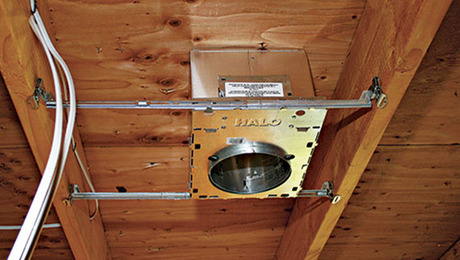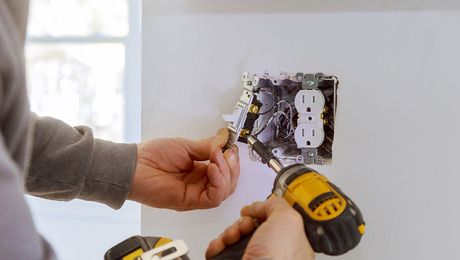Q:
Is there any benefit to installing a GFCI (ground-fault circuit interrupter) outlet on an older circuit that has no ground wire?
John Lafitte, via email, None
A:
Clifford A. Popejoy, an electrical contractor in Sacramento, California, replies: A GFCI reduces the risk of electrocution by constantly measuring and comparing the current coming into the outlet on the hot wire and the current going out on the neutral wire. Any difference in the current means that electricity is flowing back to the source on some path other than the neutral wire. That other path may be through your body to the ground, and that’s what the GFCI is designed to guard against. If the GFCI detects a difference above 6 milliamps for a specific time, it interrupts the power to the outlet. This interruption generally will protect a reasonably healthy adult from electrocution.
A GFCI works as well without an equipment-grounding conductor (ground). Note that the test button on the GFCI works without a ground wire, but a plug-in outlet tester that checks polarity and GFCI function won’t work because the plugin tester relies on the ground wire to create a ground fault.
When a GFCI is installed without a ground wire, the connections are the same: The incoming hot (usually black) and neutral (usually white) are connected to the appropriate terminals marked “LINE.” The hot wire goes to the brass terminal, and the neutral to the silver. In a retrofit installation, you must verify which wire is the hot and which is the neutral.
And per the 2002 National Electrical Code, the outlet has to be labeled “no equipment ground.” Such a label is included with most GFCIs.
If any downstream outlets that have ground slots are protected by an ungrounded GFCI, they also must be marked “no equipment ground,” as well as “GFCI protected.” Also per the NEC, if the cable between an ungrounded GFCI and downstream outlets has a ground wire, the ground wire is not to be connected. If the label falls off, you don’t want someone thinking that the outlets are grounded. Just tuck that bare ground wire into the back of the box.

























